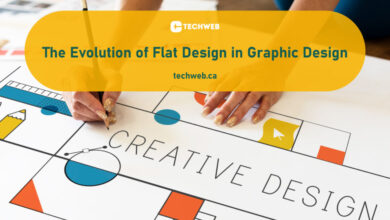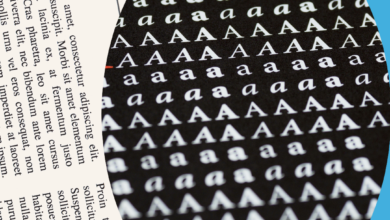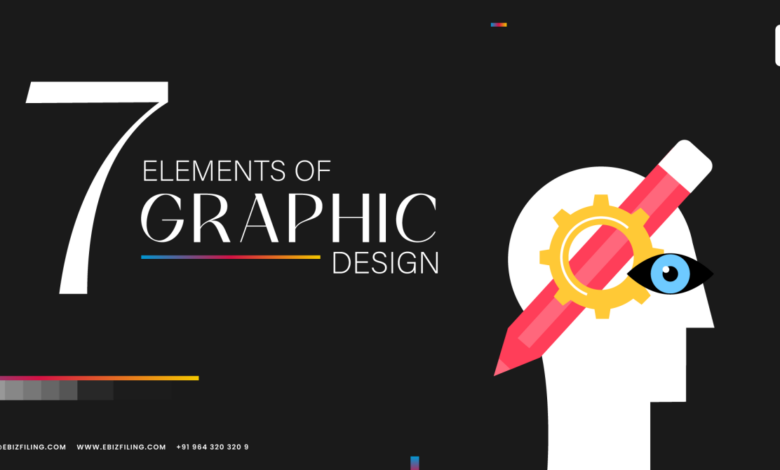
What is Graphic Design? A Visual Exploration
What is graphic design? It’s more than just pretty pictures; it’s the art and science of visual communication. Think about the last captivating logo you saw, the website that effortlessly guided you to what you needed, or even the impactful poster that stopped you in your tracks. All of these are testaments to the power of graphic design – a field that blends creativity with strategy to convey messages, build brands, and evoke emotions.
This post dives into the core principles, processes, and impact of this fascinating field.
From understanding the basic elements like typography and color theory to mastering software like Adobe Photoshop and Illustrator, graphic design is a multifaceted discipline. We’ll explore various design styles, the roles designers play, and the ever-evolving tools they use to create compelling visuals across print and digital platforms. Get ready to unlock the secrets behind effective visual communication!
Defining Graphic Design
Graphic design is the art and practice of planning and projecting ideas and experiences with visual and textual content. It’s about communicating information effectively and aesthetically through various media, aiming to inform, persuade, or evoke emotion in the viewer. It’s a multifaceted field encompassing many specialized areas, all united by the common goal of visual communication.
Core Principles of Graphic Design
Effective graphic design relies on a set of fundamental principles that guide the arrangement and presentation of visual elements. These principles work together to create a cohesive and impactful design. Understanding these principles is key to creating successful visual communication. Key principles include balance (symmetrical, asymmetrical, radial), proximity (grouping related elements), alignment (consistent placement of elements), repetition (repeating visual elements for unity), contrast (using differences to create visual interest), and whitespace (using empty space effectively).
So, what is graphic design? It’s all about visual communication, using images and typography to convey a message. And a huge part of getting that message out there, especially these days, involves mastering online platforms, which is why I found the article on getting it on with youtube so helpful. Ultimately, strong graphic design principles are key whether you’re creating a YouTube thumbnail or a company logo; it’s all about visual impact.
Mastering these principles allows designers to create visually appealing and easily understandable designs.
Key Elements of Effective Visual Communication
Effective visual communication hinges on the skillful use of several key elements. These elements, when combined thoughtfully, create a message that resonates with the audience. These include typography (the art of arranging type), imagery (photographs, illustrations, icons), color (evoking emotion and creating hierarchy), and space (the arrangement and use of white space). Each element contributes significantly to the overall impact and clarity of the design.
For instance, a carefully chosen typeface can significantly impact the readability and tone of a message, while strategic use of color can guide the viewer’s eye and highlight important information.
Examples of Different Graphic Design Styles and Their Applications
Graphic design encompasses a wide range of styles, each with its unique characteristics and applications. Minimalism, characterized by its simplicity and clean lines, is often used in branding and web design for its modern and sophisticated feel. Think of the Apple logo – a minimalist masterpiece. Conversely, Art Deco, known for its geometric patterns and luxurious feel, is frequently used in packaging and luxury branding.
Swiss Style, with its emphasis on grid systems and objectivity, is often seen in corporate brochures and institutional materials. Finally, illustrations, from simple line drawings to complex digital paintings, can be used to add personality and visual interest to various design projects, including children’s books, website banners, and even product packaging. The style chosen depends heavily on the intended message and target audience.
Print vs. Digital Graphic Design
| Feature | Print Design | Digital Design | Key Differences |
|---|---|---|---|
| Medium | Physical materials (paper, canvas, etc.) | Screens (computers, phones, tablets) | Tangible vs. intangible |
| Resolution | High resolution for sharp print quality | Variable resolution, optimized for screen viewing | Print requires higher DPI than screen |
| Color | CMYK color model (cyan, magenta, yellow, black) | RGB color model (red, green, blue) | Different color spaces require adjustments for consistency |
| Interactivity | Limited interactivity | High level of interactivity possible (animations, links, etc.) | Digital design allows for dynamic content and user engagement |
The Role of Graphic Designers
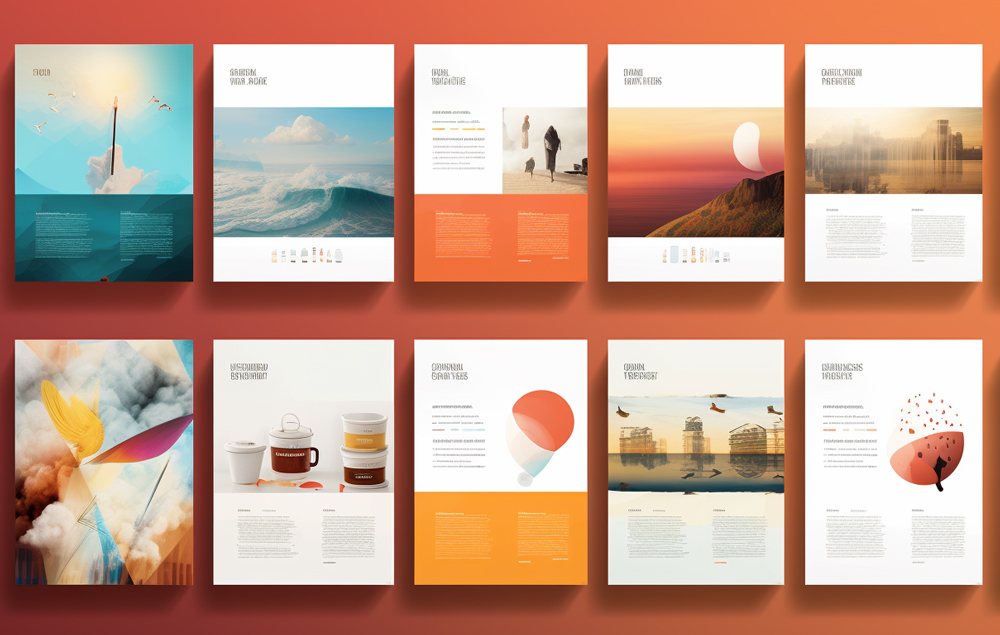
Source: weartfriends.com
Graphic designers are the visual storytellers of the modern world. They translate complex ideas and information into engaging and effective visual communication, impacting everything from brand identities to website layouts and social media campaigns. Their role extends far beyond simply making things “look pretty”; it’s about strategically using design principles to achieve specific goals for their clients or employers.Graphic designers are responsible for a diverse range of tasks, all geared towards creating impactful visual communication.
This involves a deep understanding of typography, color theory, layout, and image manipulation. They are problem-solvers, using their creative skills to communicate a message clearly and memorably. Their work influences how we perceive brands, products, and information, shaping our daily experiences.
Typical Responsibilities of a Graphic Designer
A graphic designer’s day-to-day tasks vary widely depending on their specialization and employer, but common responsibilities include conceptualizing and creating visual designs, collaborating with clients or marketing teams to understand their needs, developing and presenting design concepts, using design software to create and edit images and layouts, and ensuring designs are consistent with brand guidelines. They might also be involved in managing projects, meeting deadlines, and presenting their work to clients.
The process is often iterative, with revisions and feedback playing a crucial role in achieving the final product.
The Creative Process in Graphic Design
The creative process for a graphic designer is rarely linear. It often involves a series of stages, starting with research and understanding the client’s brief, followed by brainstorming and sketching ideas. This initial conceptualization stage is vital for establishing the direction of the project. Then comes the design phase, where designers utilize software like Adobe Photoshop, Illustrator, and InDesign to translate their ideas into visual form.
This involves numerous iterations and revisions, incorporating client feedback and making adjustments to achieve the desired aesthetic and effectiveness. Finally, the design is prepared for production, whether that’s for print or digital media. The entire process demands strong communication, problem-solving, and adaptability.
Career Paths in Graphic Design
The field of graphic design offers a diverse range of career paths. Some designers may specialize in branding and identity, creating logos, brand guidelines, and marketing materials for companies. Others might focus on web design, creating visually appealing and user-friendly websites. Still others might specialize in print design, working on brochures, magazines, and packaging. Some designers may choose to freelance, working on a variety of projects for different clients, while others prefer the stability of working in-house for a company or agency.
The opportunities are vast, allowing designers to find a niche that suits their skills and interests. For example, a designer might specialize in UX/UI design, focusing on the user experience and interface of websites and apps, or they could become an art director, overseeing a team of designers and managing creative projects.
Essential Skills for a Graphic Designer
A strong foundation in design principles is crucial, but several other skills contribute to a graphic designer’s success. The ability to understand and apply design principles like typography, color theory, and layout is fundamental. Proficiency in design software (such as Adobe Creative Suite) is also essential. Strong communication skills are paramount, enabling effective collaboration with clients and colleagues.
Problem-solving abilities are vital for overcoming creative challenges and finding innovative solutions. Finally, time management and organizational skills are necessary for managing multiple projects and meeting deadlines effectively.
- Proficiency in Adobe Creative Suite (Photoshop, Illustrator, InDesign)
- Strong understanding of design principles (typography, color theory, layout)
- Excellent communication and collaboration skills
- Exceptional problem-solving and creative thinking abilities
- Strong time management and organizational skills
- A keen eye for detail and visual aesthetics
Graphic Design Principles and Theory
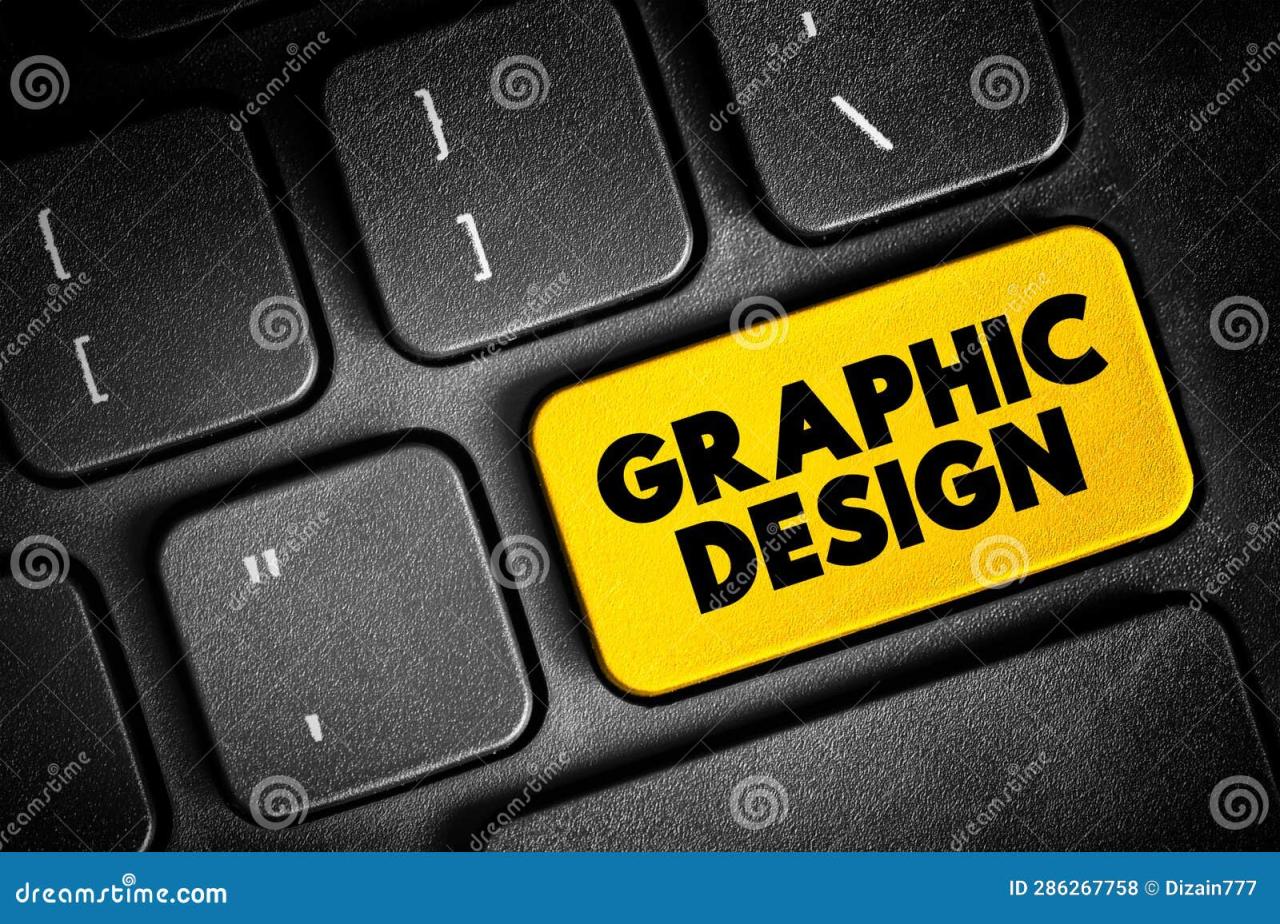
Source: dreamstime.com
Graphic design isn’t just about making things look pretty; it’s about communicating effectively through visual means. Underlying every successful design are fundamental principles and theories that guide the creative process and ensure the message resonates with the intended audience. Understanding these principles is crucial for any aspiring or practicing graphic designer.
Visual Hierarchy in Design
Visual hierarchy dictates the order in which the viewer’s eye scans a design. It’s about guiding the audience’s attention to the most important elements first, creating a clear path through the information presented. This is achieved through various techniques such as size, color, contrast, and placement. A well-designed poster, for instance, might use a large, bold headline to immediately grab attention, followed by supporting text in a smaller, less prominent font.
Poor visual hierarchy, on the other hand, can lead to confusion and a failure to convey the intended message effectively. The principle ensures that the design’s message is understood in the intended sequence, maximizing impact and clarity.
The Role of Color Theory in Creating Effective Visuals
Color theory is the foundation of effective visual communication. Understanding the relationships between colors – their hue, saturation, and value – allows designers to create harmonious or contrasting palettes that evoke specific emotions and enhance the overall message. For example, warm colors like reds and oranges often convey energy and excitement, while cool colors like blues and greens can suggest calmness and tranquility.
The use of complementary colors (colors opposite each other on the color wheel) can create vibrant and eye-catching designs, while analogous colors (colors next to each other on the color wheel) can produce a more serene and cohesive feel. Careful consideration of color psychology is essential for creating designs that resonate emotionally with the target audience.
Typography Choices and Their Impact
Typography, the art and technique of arranging type, plays a vital role in conveying a design’s message. Different typefaces – such as serif, sans-serif, script, and display – evoke different moods and feelings. Serif fonts (like Times New Roman) are often considered more traditional and formal, while sans-serif fonts (like Arial) are typically perceived as modern and clean. Script fonts add a touch of elegance or whimsy, while display fonts are often used for headlines and eye-catching elements.
The choice of typeface, along with font size, weight, and spacing, significantly impacts readability and the overall aesthetic of the design. Inconsistent or poorly chosen typography can hinder comprehension and detract from the design’s effectiveness.
Balance in Design
Imagine a simple poster advertising a sale. On one side, a large image of a discounted product is placed. On the other side, smaller text detailing the sale’s specifics and dates are neatly arranged. This creates a symmetrical balance, where the visual weight is evenly distributed on either side of an imaginary central axis. This is an example of symmetrical balance.
The visual weight of the large image is balanced by the visual weight of the text block, creating a sense of harmony and stability. The overall design feels calm and well-organized.
Types of Graphic Design: What Is Graphic Design
Graphic design is a vast field, encompassing many specializations. While all share the common goal of visual communication, each type employs different techniques and focuses on specific mediums and audiences. Understanding these specializations helps appreciate the breadth and versatility of the profession.
Logo Design
Logo design is the creation of a visual symbol representing a brand, company, or organization. A well-designed logo is memorable, easily recognizable, and effectively communicates the brand’s personality and values. For example, the Nike swoosh is instantly recognizable globally, conveying speed and movement, perfectly aligning with the brand’s athletic focus. Apple’s logo, a simple bitten apple, represents innovation and a user-friendly approach.
A logo’s purpose is to provide a consistent visual identity across all brand materials, creating a strong brand recall and building consumer trust. The process typically involves researching the brand, sketching various concepts, refining the chosen design digitally, and testing its effectiveness across different applications.
Website Layout Design
Effective website layouts prioritize user experience (UX) and user interface (UI) design. A good website layout is intuitive, visually appealing, and easily navigable. The process involves wireframing – creating a skeletal structure of the website’s pages – followed by prototyping – building interactive mockups – to test the layout’s functionality and usability. Designers consider factors like typography, color palettes, imagery, and white space to create a visually harmonious and informative website.
For example, a news website might prioritize clear headlines and concise text, using a grid-based layout for easy readability, while an e-commerce site might emphasize product imagery and clear calls to action, using a visually engaging carousel for featured items. The goal is to guide users seamlessly through the website, encouraging engagement and achieving the desired outcome, whether it’s purchasing a product, reading an article, or signing up for a service.
Infographic Design
Infographics are visual representations of information, data, or knowledge. They use a combination of text, charts, graphs, and imagery to communicate complex information in a concise and easily digestible manner. Their purpose is to simplify and clarify data, making it more engaging and memorable for the audience. For instance, an infographic explaining climate change might use charts to show rising temperatures, maps to illustrate affected regions, and images to depict the consequences.
The design process involves analyzing the data, choosing appropriate visual elements, and arranging them in a logical and visually appealing way. The key is to create a clear narrative that guides the viewer through the information, highlighting key takeaways and making the complex understandable.
Branding and Visual Identity
Branding encompasses all aspects of a company’s identity, including its name, logo, messaging, and visual style. It’s about creating a cohesive and consistent brand experience across all touchpoints. Visual identity is the visual component of branding, shaping how a brand is perceived. A strong visual identity, carefully crafted through logo design, color palettes, typography, and imagery, reinforces brand recognition and builds customer loyalty.
For example, Coca-Cola’s iconic red and white branding is instantly recognizable worldwide, creating a sense of familiarity and trust. The impact of a strong visual identity extends to increased brand awareness, improved customer engagement, and ultimately, enhanced business success. A well-defined visual identity creates a lasting impression and helps a brand stand out in a crowded marketplace.
Tools and Software
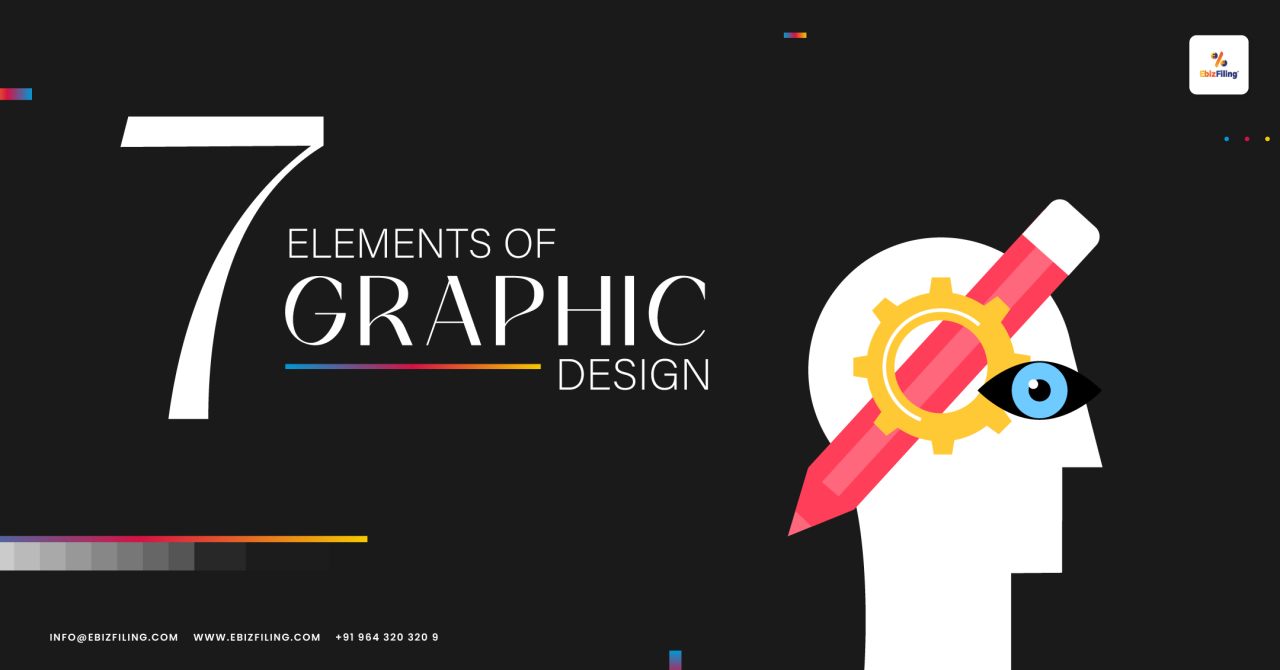
Source: ebizfiling.com
The right tools are crucial for success in graphic design. Choosing the appropriate software depends on your specific needs, project type, and budget. While some designers swear by one particular program, mastering a few key applications often provides the greatest versatility.
The graphic design landscape is populated by a range of software, each with its own strengths and weaknesses. Understanding these differences is key to making informed decisions about your design workflow. The choice isn’t always about the most expensive or feature-rich program; it’s about selecting the software that best aligns with your skills and project requirements.
Popular Graphic Design Software Applications
Several software applications dominate the graphic design industry. Each offers unique features and caters to different design styles and workflows. The following list includes some of the most widely used programs:
- Adobe Photoshop: Primarily used for raster-based image editing, ideal for photo manipulation, retouching, and digital painting.
- Adobe Illustrator: A vector-based program perfect for creating logos, illustrations, and scalable graphics.
- Adobe InDesign: Specialized in page layout and typesetting, essential for creating brochures, magazines, and books.
- Affinity Designer: A powerful and affordable alternative to Adobe Illustrator, offering similar vector-based capabilities.
- Affinity Photo: A strong competitor to Photoshop, providing a robust raster-based editing experience.
- CorelDRAW: A long-standing vector graphics editor offering a comprehensive suite of design tools.
- GIMP (GNU Image Manipulation Program): A free and open-source alternative to Photoshop, suitable for raster-based image editing.
- Inkscape: A free and open-source alternative to Illustrator, offering vector graphics capabilities.
Advantages and Disadvantages of Different Software
Each software application comes with its own set of benefits and drawbacks. The best choice depends heavily on the specific project and the designer’s skillset.
For example, Adobe Photoshop excels at photo manipulation but lacks the scalability of Adobe Illustrator’s vector graphics. Conversely, Illustrator is perfect for logos but might be less intuitive for complex photo editing tasks. Free and open-source options like GIMP and Inkscape offer powerful features but might have a steeper learning curve compared to their commercial counterparts.
Vector Graphics vs. Raster Graphics, What is graphic design
Understanding the difference between vector and raster graphics is fundamental to graphic design. The choice between them significantly impacts the scalability and quality of your work.
| Feature | Vector Graphics | Raster Graphics |
|---|---|---|
| Image Composition | Mathematical equations defining lines and curves | Grid of pixels |
| Scalability | Can be scaled infinitely without losing quality | Loses quality when scaled up (pixelation) |
| File Size | Generally smaller file sizes | Generally larger file sizes, especially at high resolutions |
| File Formats | .AI, .SVG, .EPS | .JPEG, .PNG, .TIFF, .GIF |
Importance of Understanding File Formats
Different file formats are designed for specific purposes and have different properties. Choosing the right format is critical for ensuring image quality, file size, and compatibility across various platforms and applications. For instance, a JPEG is suitable for photographs due to its compression, while a PNG is better for images with sharp lines and transparency. Understanding these nuances is essential for delivering high-quality work that meets client expectations and printing requirements.
For example, using a low-resolution JPEG for a large-format print will result in a blurry, pixelated image. Conversely, using a large, uncompressed TIFF file for web use will lead to slow loading times. Selecting the appropriate file format ensures optimal results for each project.
The Impact of Graphic Design
Graphic design is far more than just aesthetics; it’s a powerful tool that significantly influences how we perceive and interact with the world around us. From the products we buy to the political messages we absorb, graphic design subtly, and sometimes overtly, shapes our behaviors and beliefs. Its impact is pervasive and profoundly affects our daily lives.Graphic design’s influence on consumer behavior is multifaceted and deeply rooted in psychology.
Graphic Design’s Influence on Consumer Behavior
Effective graphic design directly impacts purchasing decisions. A well-designed product package, for example, can instantly communicate quality, value, and brand personality. Think of the iconic Coca-Cola bottle – its shape and logo are instantly recognizable and evoke feelings of happiness and refreshment, influencing consumers to choose it over competitors. Conversely, poorly designed packaging can deter customers, leading to lost sales.
Color psychology plays a crucial role; certain colors are associated with specific emotions and can be strategically used to influence consumer perception. For instance, using calming blues for a health product or vibrant reds for a fast-food chain. Furthermore, typography, imagery, and overall layout contribute to the overall message and impact the consumer’s perception of the product or service.
The clarity and ease of understanding of the information presented are also key factors in influencing purchasing decisions. A cluttered or confusing design can lead to frustration and lost sales.
Graphic Design’s Role in Building Brand Identity
Brand identity is the visual manifestation of a company’s values, mission, and personality. Graphic design is the cornerstone of creating a cohesive and memorable brand. A strong brand identity, carefully crafted through logo design, color palettes, typography, and overall visual communication, fosters customer loyalty and recognition. Consider Apple’s minimalist aesthetic – its clean lines, simple typography, and consistent use of color across all platforms have created a globally recognizable and highly valued brand.
This consistency across all marketing materials and product design builds trust and reinforces the brand’s message. Conversely, an inconsistent or poorly designed brand identity can lead to confusion and dilute the brand’s message, hindering its ability to connect with its target audience.
Graphic Design Used for Social and Political Messaging
Graphic design has been a powerful tool for social and political movements throughout history. Posters, pamphlets, and other visual communication tools have been used to spread awareness, mobilize support, and inspire action. The iconic “Hope” poster featuring Barack Obama, designed by Shepard Fairey, is a prime example of how graphic design can effectively communicate a message and generate enthusiasm.
Similarly, many social movements utilize impactful imagery and typography to convey their messages and garner support for their causes. These designs often employ symbolism, strong colors, and impactful typography to create a lasting impression and inspire action. Conversely, poorly designed social or political messaging can be ineffective or even counterproductive, failing to resonate with the target audience and potentially hindering the cause.
Case Study: The Successful Launch of the iPod
The iPod’s launch was a triumph, partly due to its innovative design. The sleek, white design, coupled with the intuitive click wheel interface, immediately set it apart from bulky MP3 players of the time. Apple’s minimalist aesthetic, already established through its computer designs, was seamlessly translated to the iPod, reinforcing the brand identity and creating a sense of desirability.
The clean packaging, featuring the iconic silhouette of the device, further enhanced the product’s appeal. This cohesive visual language, expertly crafted through graphic design, contributed significantly to the iPod’s overwhelming success and cemented Apple’s position as a leader in the consumer electronics market. The impact was immediate and lasting, shaping the landscape of personal music players for years to come.
Conclusion
So, what is graphic design, in a nutshell? It’s the powerful force behind effective visual communication, shaping our experiences and influencing our perceptions. Whether it’s crafting a memorable logo, designing a user-friendly website, or creating an infographic that simplifies complex data, graphic designers play a crucial role in how we interact with the world around us. Hopefully, this exploration has given you a deeper appreciation for the creativity, strategy, and impact behind every well-designed visual.
FAQ Section
What’s the difference between a graphic designer and a web designer?
While there’s overlap, graphic designers focus on the visual aspects of communication across various media (print, digital, etc.), while web designers specialize in creating user-friendly and visually appealing websites.
How much does a graphic designer earn?
Salaries vary widely based on experience, location, and specialization. Entry-level designers may earn less, while experienced professionals can command significantly higher salaries.
Is graphic design a good career choice?
If you’re creative, detail-oriented, and enjoy problem-solving, graphic design can be a rewarding career. However, it’s a competitive field, so continuous learning and skill development are crucial.
Do I need a degree to be a graphic designer?
While a degree can be beneficial, it’s not always required. A strong portfolio showcasing your skills and talent is often more important than formal education.
